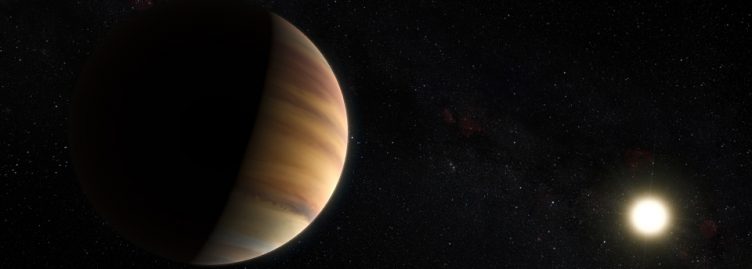An international team led by Alexandre Santerne from Instituto de Astrofísica e Ciências do Espaço (IA), made a 5-year radial velocity1 campaign of Kepler’s giant exoplanet candidates, using the SOPHIE spectrograph (Observatory of Haute-Provence, France), and found that 52,3% were actually eclipsing binaries2, while 2,3% were brown dwarfs3.
Giant transiting exoplanets are easily mimicked by false positives, so spectroscopic follow-up observations are needed to establish the planetary nature of the transit detections, and easily reveal blended multiple stellar systems.
Notes:
- The Radial Velocity method detects exoplanets measuring tiny variations in the (radial) velocity of the star, due to the motion that an orbiting planet induces in the star. As an example, the speed variation that the Earth imprints in the Sun is of about 10 cm/s (about 0.36 km/h). With this method you can set a minimum value for the planets’ mass.
- An Eclipsing Binary is a binary star system aligned with the observers’ line of sight, which causes the larger star to eclipses the smaller, and the smaller to transit the largers’ disk. This transit can sometimes be mistaken with the transit of a giant exoplanet.
- A Brown Dwarf, sometimes referred as a “failed star” is a sub-stellar object, without enough mass to fuse hydrogen in its core. They occupy the gap between gas giant planets, and M dwarf (also known as red dwarf) stars. However, the threshold between gas giants and brown dwarfs is still highly debated.


